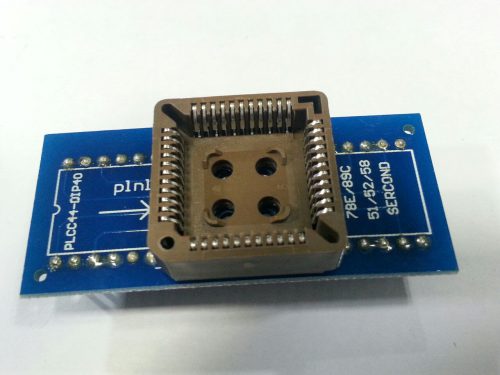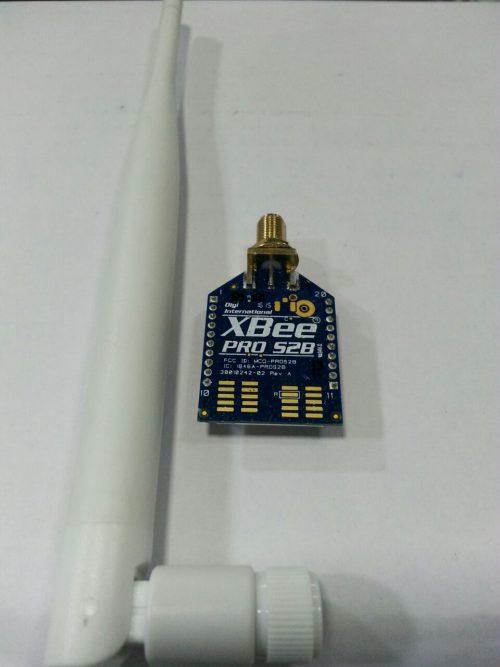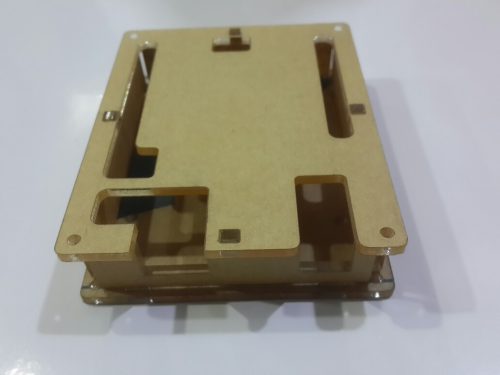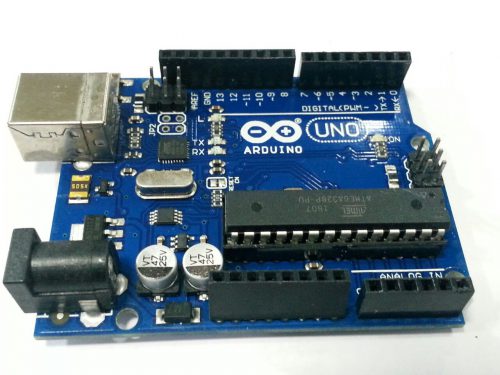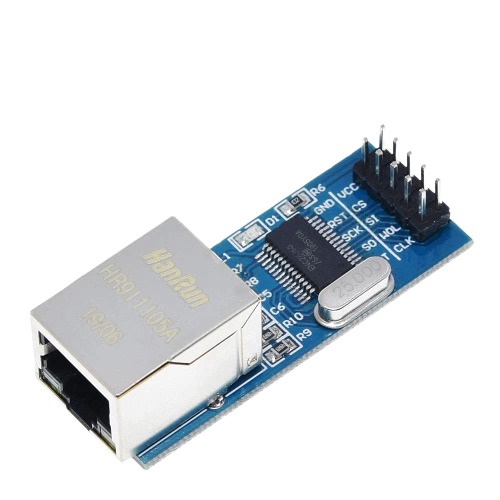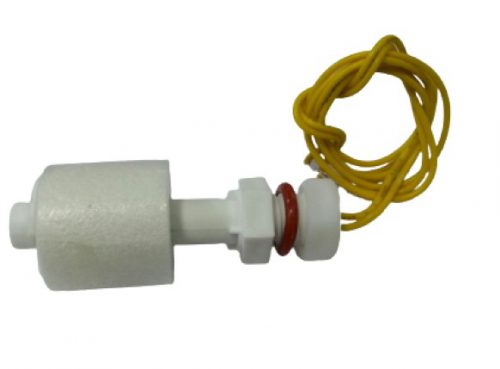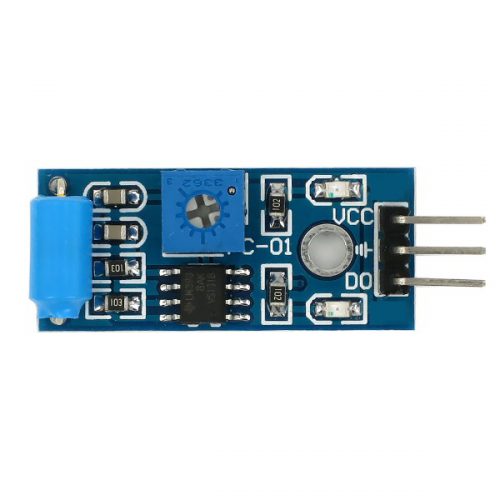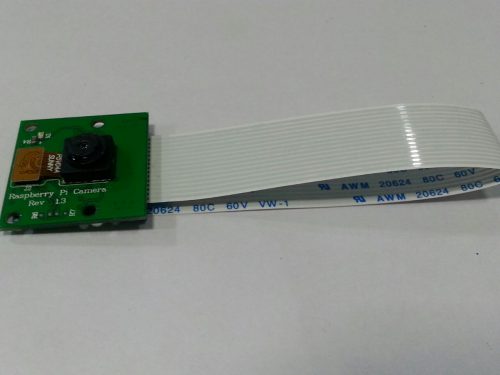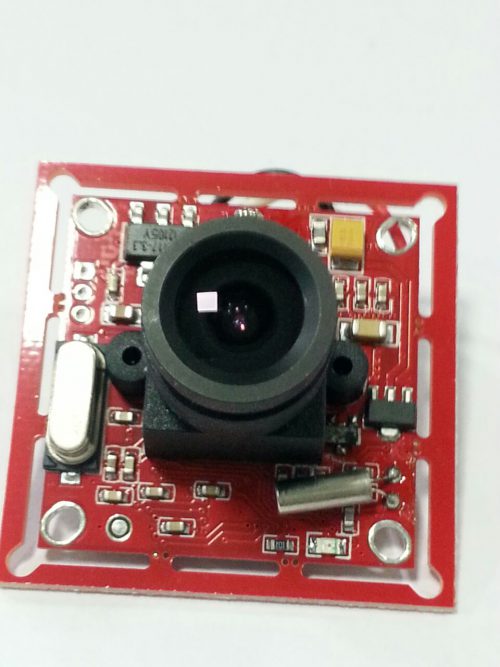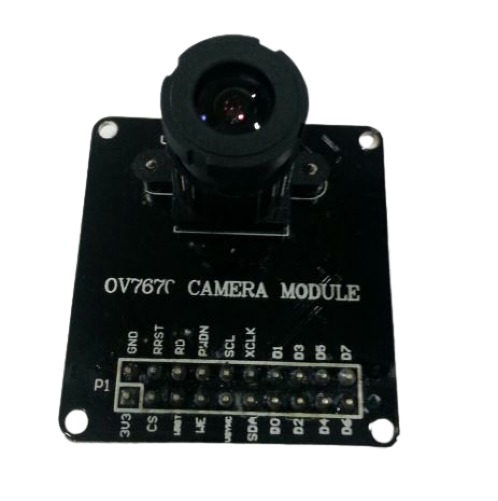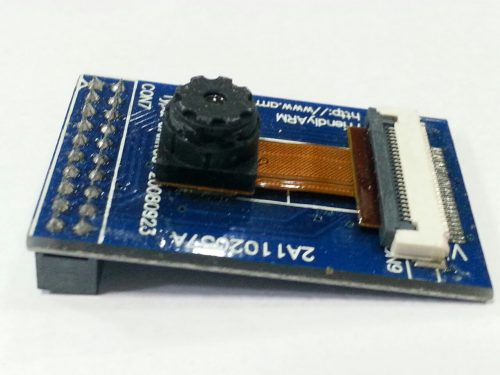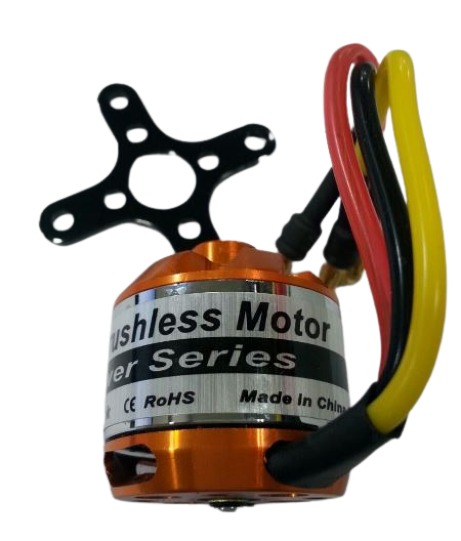-
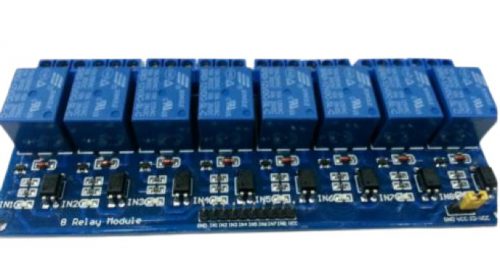 The 8 channel 12V relay module provides 8 optically isolated inputs that accept a wide range of voltage. This is a great way to switch on or off AC or DC loads using your Arduino. The relays are single-pole double-throw (SPDT) and are rated for 10A @ 250VAC. The ground for the relay coils is separate from the ground for the input signals. This, along with the optical isolation, provides a total galvanic isolation between the input and output. The two grounds could be joined together if desired with the included jumper. The relay coils run on 12VDC, and the module has screw-terminal blocks for sturdy and reusable attachments for the external load. The signal and power inputs run through the male single-row header.
The 8 channel 12V relay module provides 8 optically isolated inputs that accept a wide range of voltage. This is a great way to switch on or off AC or DC loads using your Arduino. The relays are single-pole double-throw (SPDT) and are rated for 10A @ 250VAC. The ground for the relay coils is separate from the ground for the input signals. This, along with the optical isolation, provides a total galvanic isolation between the input and output. The two grounds could be joined together if desired with the included jumper. The relay coils run on 12VDC, and the module has screw-terminal blocks for sturdy and reusable attachments for the external load. The signal and power inputs run through the male single-row header. -
 A simple flex sensor 2.2" in length. As the sensor is flexed, the resistance across the sensor increases. The resistance of the flex sensor changes when the metal pads are on the outside of the bend (text on inside of bend). Connector is 0.1" spaced and bread board friendly. Check datasheet for full specifications.
A simple flex sensor 2.2" in length. As the sensor is flexed, the resistance across the sensor increases. The resistance of the flex sensor changes when the metal pads are on the outside of the bend (text on inside of bend). Connector is 0.1" spaced and bread board friendly. Check datasheet for full specifications. -
 A simple flex sensor 4.5" in length. As the sensor is flexed, the resistance across the sensor increases. The resistance of the flex sensor changes when the metal pads are on the outside of the bend (text on inside of bend). Connector is 0.1" spaced and bread board friendly. Check datasheet for full specifications.
A simple flex sensor 4.5" in length. As the sensor is flexed, the resistance across the sensor increases. The resistance of the flex sensor changes when the metal pads are on the outside of the bend (text on inside of bend). Connector is 0.1" spaced and bread board friendly. Check datasheet for full specifications. -
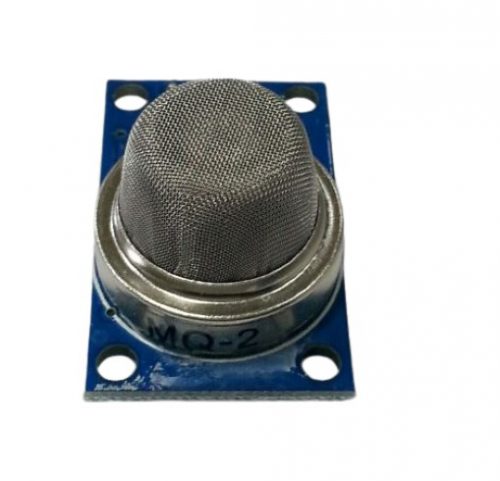 The MQ series of gas sensors use a small heater inside with an electro-chemical sensor. They are sensitive for a range of gasses and are used indoors at room temperature. The output is an analog signal and can be read with an analog input of the Arduino. The MQ-2 Gas Sensor module is useful for gas leakage detecting in home and industry. It can detect LPG, i-butane, propane, methane ,alcohol, hydrogen and smoke.
The MQ series of gas sensors use a small heater inside with an electro-chemical sensor. They are sensitive for a range of gasses and are used indoors at room temperature. The output is an analog signal and can be read with an analog input of the Arduino. The MQ-2 Gas Sensor module is useful for gas leakage detecting in home and industry. It can detect LPG, i-butane, propane, methane ,alcohol, hydrogen and smoke. -
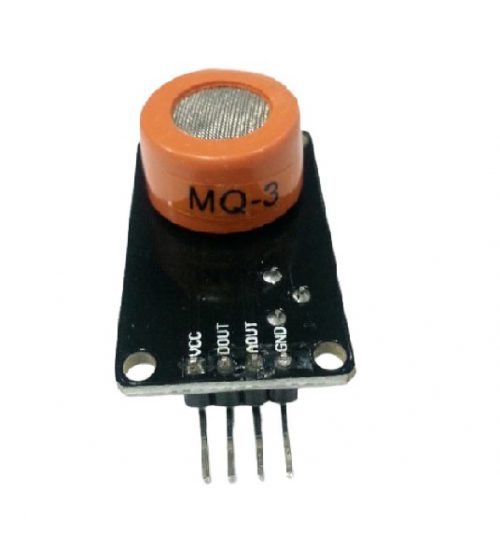 This module is made using Alcohol Gas Sensor MQ3. It is a low cost semiconductor sensor which can detect the presence of alcohol gases at concentrations from 0.05 mg/L to 10 mg/L. The sensitive material used for this sensor is SnO2, whose conductivity is lower in clean air. It’s conductivity increases as the concentration of alcohol gases increases. It has high sensitivity to alcohol and has a good resistance to disturbances due to smoke, vapor and gasoline. This module provides both digital and analog outputs. MQ3 alcohol sensor module can be easily interfaced with Microcontrollers, Arduino Boards, Raspberry Pi etc.
This module is made using Alcohol Gas Sensor MQ3. It is a low cost semiconductor sensor which can detect the presence of alcohol gases at concentrations from 0.05 mg/L to 10 mg/L. The sensitive material used for this sensor is SnO2, whose conductivity is lower in clean air. It’s conductivity increases as the concentration of alcohol gases increases. It has high sensitivity to alcohol and has a good resistance to disturbances due to smoke, vapor and gasoline. This module provides both digital and analog outputs. MQ3 alcohol sensor module can be easily interfaced with Microcontrollers, Arduino Boards, Raspberry Pi etc. -
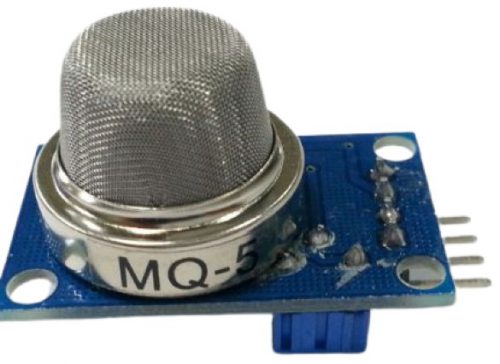 Gas Sensor(MQ5) module is useful for gas leakage detection (in home and industry). It is suitable for detecting H2, LPG, CH4, CO, Alcohol. Due to its high sensitivity and fast response time, measurements can be taken as soon as possible. The sensitivity of the sensor can be adjusted by using the potentiometer.
Gas Sensor(MQ5) module is useful for gas leakage detection (in home and industry). It is suitable for detecting H2, LPG, CH4, CO, Alcohol. Due to its high sensitivity and fast response time, measurements can be taken as soon as possible. The sensitivity of the sensor can be adjusted by using the potentiometer. -
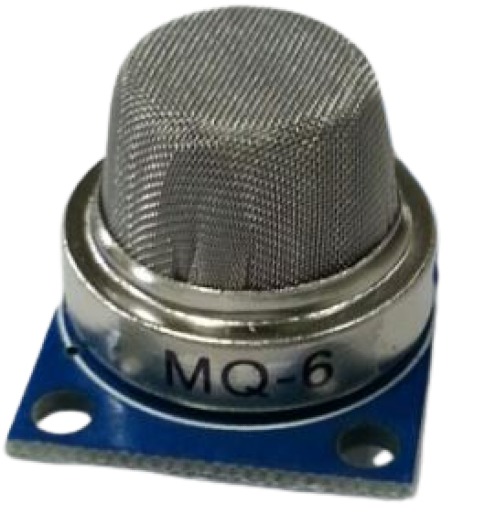 MQ 6 Gas sensor is used as LPG, Butane and Propane Sensor to generate alarm when there is leakage of these gases from the source. MQ6 is a highly sensitive gas sensor to petroleum based gases but less sensitive to Alcohol and Carbon di oxide. This simple sensor can be installed in the kitchen to give warning alarm if there is leakage of LPG.
MQ 6 Gas sensor is used as LPG, Butane and Propane Sensor to generate alarm when there is leakage of these gases from the source. MQ6 is a highly sensitive gas sensor to petroleum based gases but less sensitive to Alcohol and Carbon di oxide. This simple sensor can be installed in the kitchen to give warning alarm if there is leakage of LPG. -
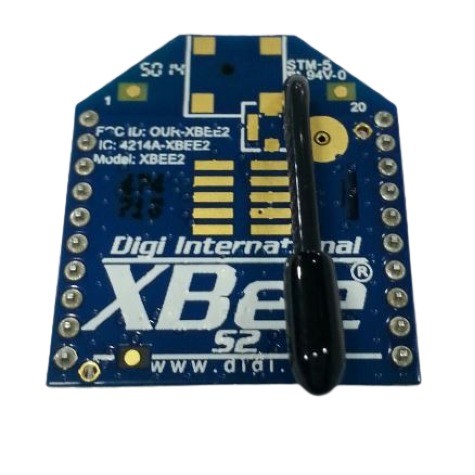 This is the XBee XB24-Z7WIT-004 module from Digi. Series 2 improves on the power output and data protocol. Series 2 modules allow you to create complex mesh networks based on the XBee ZB ZigBee mesh firmware. These modules allow a very reliable and simple communication between microcontrollers, computers, systems, really anything with a serial port! Point to point and multi-point networks are supported. These are essentially the same hardware as the older Series 2.5, but have updated firmware. They will work with Series 2.5 modules if you update the firmware through X-CTU.
This is the XBee XB24-Z7WIT-004 module from Digi. Series 2 improves on the power output and data protocol. Series 2 modules allow you to create complex mesh networks based on the XBee ZB ZigBee mesh firmware. These modules allow a very reliable and simple communication between microcontrollers, computers, systems, really anything with a serial port! Point to point and multi-point networks are supported. These are essentially the same hardware as the older Series 2.5, but have updated firmware. They will work with Series 2.5 modules if you update the firmware through X-CTU. -
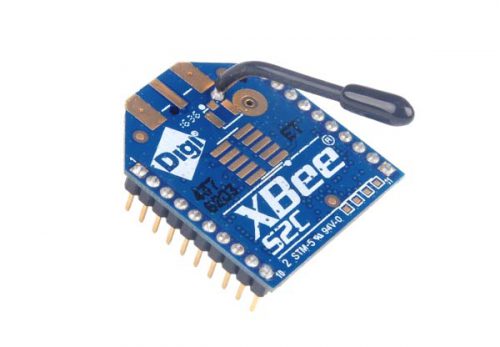 This is the XBee XBP24-BZ7WIT-004 module from Digi. The new Series 2B improves upon the power output and data protocol of the Pro Series2. Series 2B modules allow you to create complex mesh networks based on the XBee ZB ZigBee mesh firmware. These modules allow a very reliable and simple communication between microcontrollers, computers, systems, really anything with a serial port! Point to point and multi-point networks are supported. Series 2B modules use a different hardware configuration from the earlier models and while they will communicate with Series 2 XBee modules, they are not compatible with the outdated Series 2.5 Modules.
This is the XBee XBP24-BZ7WIT-004 module from Digi. The new Series 2B improves upon the power output and data protocol of the Pro Series2. Series 2B modules allow you to create complex mesh networks based on the XBee ZB ZigBee mesh firmware. These modules allow a very reliable and simple communication between microcontrollers, computers, systems, really anything with a serial port! Point to point and multi-point networks are supported. Series 2B modules use a different hardware configuration from the earlier models and while they will communicate with Series 2 XBee modules, they are not compatible with the outdated Series 2.5 Modules. -
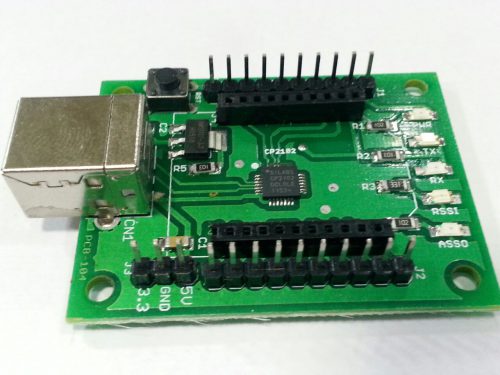 This is a simple to use, USB to serial base unit for the XBee line. This unit works with all XBee modules including the Series 1 and Series 2.5, standard and Pro version. Plug the unit into the XBee Explorer, attach USB cable, and you will have direct access to the serial and programming pins on the XBee unit. The board is powered by the USB cable. XBee modules and USB cable are sold separately.
This is a simple to use, USB to serial base unit for the XBee line. This unit works with all XBee modules including the Series 1 and Series 2.5, standard and Pro version. Plug the unit into the XBee Explorer, attach USB cable, and you will have direct access to the serial and programming pins on the XBee unit. The board is powered by the USB cable. XBee modules and USB cable are sold separately. -
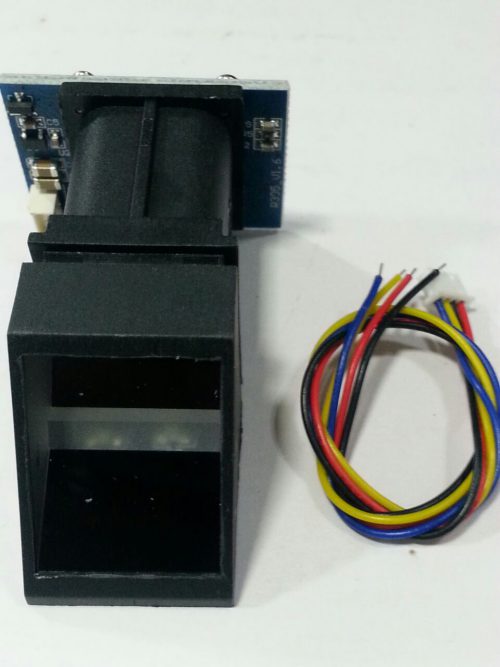 This is an optical bio-metric fingerprint reader/sensor (R305) module with TTL UART interface for direct connections to a microcontroller UART. The user can store the finger print data in the module and can configure it in 1:1 or 1: N mode for identifying the person. This module can directly interface with any 3.3V or 5V microcontrollers, but a suitable level converter/serial adapter is required for interfacing with the serial port of a PC.
This is an optical bio-metric fingerprint reader/sensor (R305) module with TTL UART interface for direct connections to a microcontroller UART. The user can store the finger print data in the module and can configure it in 1:1 or 1: N mode for identifying the person. This module can directly interface with any 3.3V or 5V microcontrollers, but a suitable level converter/serial adapter is required for interfacing with the serial port of a PC. -
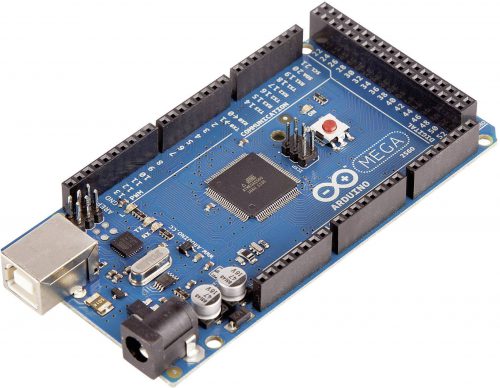 The Mega 2560 is a microcontroller board based on the ATmega 2560. It has 54 digital input/output pins (of which 15 can be used as PWM outputs), 16 analog inputs, 4 UARTs (hardware serial ports), a 16 MHz crystal oscillator, a USB connection, a power jack, an ICSP header, and a reset button. It contains everything needed to support the microcontroller; simply connect it to a computer with a USB cable or power it with a AC-to-DC adapter or battery to get started. The Mega 2560 board is compatible with most shields designed for the Uno and the former boards.
The Mega 2560 is a microcontroller board based on the ATmega 2560. It has 54 digital input/output pins (of which 15 can be used as PWM outputs), 16 analog inputs, 4 UARTs (hardware serial ports), a 16 MHz crystal oscillator, a USB connection, a power jack, an ICSP header, and a reset button. It contains everything needed to support the microcontroller; simply connect it to a computer with a USB cable or power it with a AC-to-DC adapter or battery to get started. The Mega 2560 board is compatible with most shields designed for the Uno and the former boards. -
 A wireless radio frequency (RF) transmitter and receiver can be easily made using HT12D Decoder, HT12E Encoder and ASK RF Module. Wireless transmission can be done by using 433Mhz or 315MHz ASK RF Transmitter and Receiver modules. In these modules digital data is represented by different amplitudes of the carrier wave, hence this modulation is known as Amplitude Shift Keying (ASK). Radio Frequency (RF) transmission is more strong and reliable than Infrared (IR) transmission due to following reasons : Radio Frequency signals can travel longer distances than Infrared. Only line of sight communication is possible through Infrared while radio frequency signals can be transmitted even when there is obstacles. Infrared signals will get interfeared by other IR sources but signals on one frequency band in RF will not interfeared by other frequency RF signals.
A wireless radio frequency (RF) transmitter and receiver can be easily made using HT12D Decoder, HT12E Encoder and ASK RF Module. Wireless transmission can be done by using 433Mhz or 315MHz ASK RF Transmitter and Receiver modules. In these modules digital data is represented by different amplitudes of the carrier wave, hence this modulation is known as Amplitude Shift Keying (ASK). Radio Frequency (RF) transmission is more strong and reliable than Infrared (IR) transmission due to following reasons : Radio Frequency signals can travel longer distances than Infrared. Only line of sight communication is possible through Infrared while radio frequency signals can be transmitted even when there is obstacles. Infrared signals will get interfeared by other IR sources but signals on one frequency band in RF will not interfeared by other frequency RF signals. -
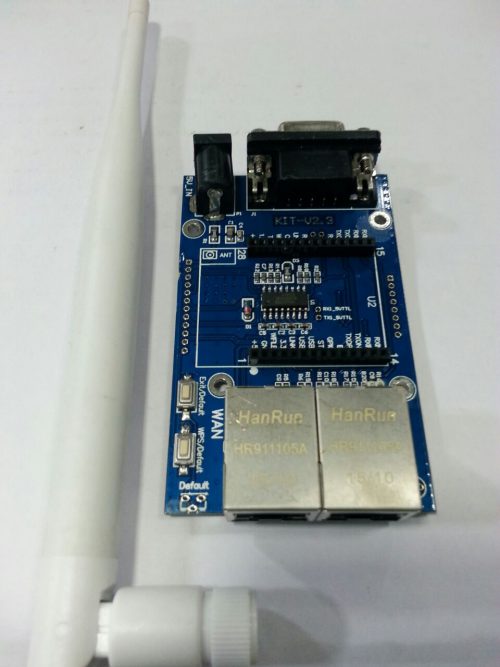 HLK-RM04 is a new embedded UART-ETH-WIFI module (serial port - Ethernet -Wireless network). This product is an embedded module based on the universal serial interface network standard, built-in TCP / IP protocol stack, enabling the user serial port, Ethernet, wireless network (wifi) interface between the conversions. Through the HLK-RM04 module, the traditional serial devices do not need to change any configuration; data can be transmitted through the Internet network. Provide a quick solution for the user’s serial devices to transfer data via Ethernet.
HLK-RM04 is a new embedded UART-ETH-WIFI module (serial port - Ethernet -Wireless network). This product is an embedded module based on the universal serial interface network standard, built-in TCP / IP protocol stack, enabling the user serial port, Ethernet, wireless network (wifi) interface between the conversions. Through the HLK-RM04 module, the traditional serial devices do not need to change any configuration; data can be transmitted through the Internet network. Provide a quick solution for the user’s serial devices to transfer data via Ethernet. -
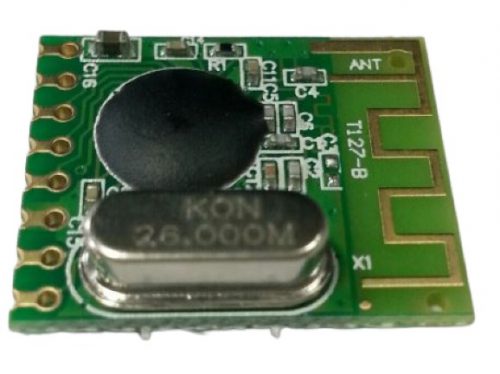 The CC2500 is a low-cost 2.4 GHz transceiver designed for very low-power wireless applications. The circuit is intended for the 2400- 2483.5 MHz ISM (Industrial, Scientific and Medical) and SRD (Short Range Device) frequency band. The RF transceiver is integrated with a highly configurable base-band modem. The modem supports various modulation formats and has a configurable data rate up to 500 kBaud. CC2500 provides extensive hardware support for packet handling, data buffering, burst transmissions, clear channel assessment, link quality indication, and wake-on-radio.
The CC2500 is a low-cost 2.4 GHz transceiver designed for very low-power wireless applications. The circuit is intended for the 2400- 2483.5 MHz ISM (Industrial, Scientific and Medical) and SRD (Short Range Device) frequency band. The RF transceiver is integrated with a highly configurable base-band modem. The modem supports various modulation formats and has a configurable data rate up to 500 kBaud. CC2500 provides extensive hardware support for packet handling, data buffering, burst transmissions, clear channel assessment, link quality indication, and wake-on-radio. -
 This High Speed CC2500 Based Wireless module is a plug and play replacement for the wired Serial Port (UART) supporting baud rates upto 38400. This CC2500 based Wireless module allow engineers of all skill levels to quickly and cost-effectively add wireless capabilities to virtually any product. More details and tutorials of this module are available in the resources section. It is not compatible with older RFpro modules.
This High Speed CC2500 Based Wireless module is a plug and play replacement for the wired Serial Port (UART) supporting baud rates upto 38400. This CC2500 based Wireless module allow engineers of all skill levels to quickly and cost-effectively add wireless capabilities to virtually any product. More details and tutorials of this module are available in the resources section. It is not compatible with older RFpro modules. -
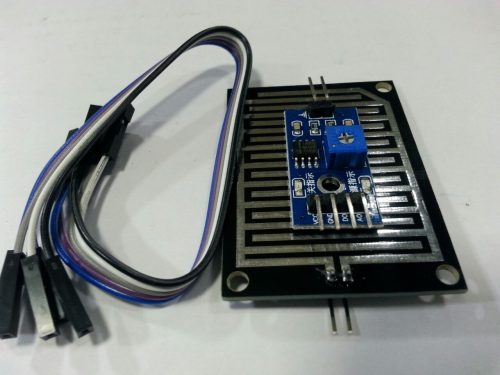 The rain sensor module is an easy tool for rain detection. It can be used as a switch when raindrop falls through the raining board and also for measuring rainfall intensity. The module features, a rain board and the control board that is separate for more convenience, power indicator LED and an adjustable sensitivity though a potentiometer. The analog output is used in detection of drops in the amount of rainfall. Connected to 5V power supply, the LED will turn on when induction board has no rain drop, and DO output is high. When dropping a little amount water, DO output is low, the switch indicator will turn on. Brush off the water droplets, and when restored to the initial state, outputs high level.
The rain sensor module is an easy tool for rain detection. It can be used as a switch when raindrop falls through the raining board and also for measuring rainfall intensity. The module features, a rain board and the control board that is separate for more convenience, power indicator LED and an adjustable sensitivity though a potentiometer. The analog output is used in detection of drops in the amount of rainfall. Connected to 5V power supply, the LED will turn on when induction board has no rain drop, and DO output is high. When dropping a little amount water, DO output is low, the switch indicator will turn on. Brush off the water droplets, and when restored to the initial state, outputs high level. -
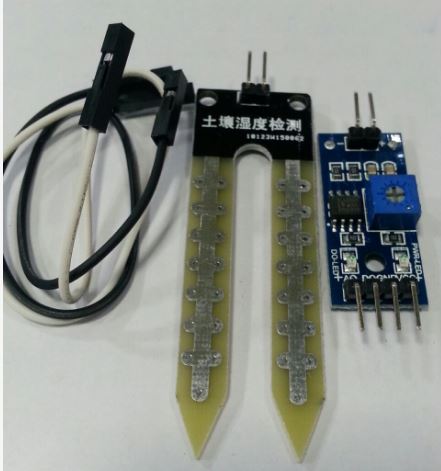 The Soil Moisture Sensor is a simple breakout for measuring the moisture in soil and similar materials. The soil moisture sensor is pretty straight forward to use. The two large exposed pads function as probes for the sensor, together acting as a variable resistor. The more water that is in the soil means the better the conductivity between the pads will be and will result in a lower resistance, and a higher SIG out.
The Soil Moisture Sensor is a simple breakout for measuring the moisture in soil and similar materials. The soil moisture sensor is pretty straight forward to use. The two large exposed pads function as probes for the sensor, together acting as a variable resistor. The more water that is in the soil means the better the conductivity between the pads will be and will result in a lower resistance, and a higher SIG out.

